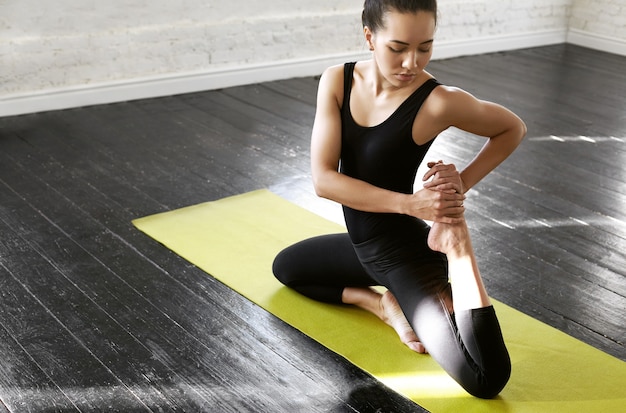
Yoga isn’t just about being flexible; it offers a ton of benefits for memory, heart, and bone health. People in the UK are spending an impressive £790 million annually on yoga classes and equipment.
Although some yoga trends seem odd—think rage yoga or dog yoga—the actual benefits are backed by science. For example, researchers at UCLA found that a three-month yoga and meditation course was more effective than traditional memory exercises in reducing age-related brain issues. Another study showed that yoga could improve sleep for breast cancer survivors.
Lucy Edge, a former advertising executive, turned to yoga instead of anti-depressants to fight depression. After a six-month break in India learning yoga, she returned feeling happier and more content despite not achieving a “yoga goddess body.” Inspired by firsthand benefits, she’s authored books and started Yoga Meds, a resource listing over 300 clinical trials on yoga’s benefits.
For those aging and looking to boost memory, yoga might be a good alternative to puzzles or Sudoku. The UCLA study indicated that engaging in yoga and meditation improved memory and reduced depression and anxiety more than memory exercises.
You don’t need to do hours of complex poses to benefit. A gentle form of Kundalini yoga once a week, combined with 20 minutes of Kirtan Kriya meditation daily, was enough for the study participants.
Yoga is also excellent for heart health. A review in the European Journal of Preventative Cardiology showed that yoga could lower the risk of heart disease as effectively as more conventional exercises like brisk walking. Stress, a significant factor in heart disease, can be reduced through yoga, which in turn helps lower blood pressure and heart rate.
Beginner-friendly yoga, like the stress-reducing poses by Charlotte Watts, or Restorative yoga, where postures are supported by bolsters and cushions, can help give your nervous system a break and reduce stress effectively.
Yoga is beneficial for managing back pain too. Sarah Shone, a physiotherapist and yoga teacher, found that incorporating yoga into a rehabilitation program led to significant pain reduction. The National Institute of Clinical Excellence (NICE) guidelines recommend yoga for back pain, and Shone now trains other physiotherapists in using yoga clinically.
In addition to these, yoga can help prevent incontinence by strengthening pelvic floor muscles and improving bone density. If you’re new, start with gentler yoga like Hatha or Iyengar and inform your teacher of any health issues.
When it comes to gear, a good yoga mat matters. Choose a mat based on your living space, whether you need to carry it around, your height, and desired thickness for joint protection. Healthista suggests the Elephant Cork Yoga Mat from Valka Yoga—eco-friendly, durable, and comfortable. Cork mats are ideal for sweaty sessions since they grip better when wet and are naturally antimicrobial.
Additionally, a yoga block can help ease into difficult poses. Cork blocks are more stable and offer better grip, albeit heavier than foam ones.
Not flexible? Don’t worry. Try Yin or Restorative classes, which are relaxing and use props. For an energetic session, Vinyasa Flow links movements to breath in a dynamic sequence. Iyengar yoga focuses on precise alignment and uses props, making it beginner-friendly. Anusara yoga blends alignment with fluid movements, usually set to uplifting music. Yoga Therapy is also available for those seeking healing for specific injuries or illnesses.